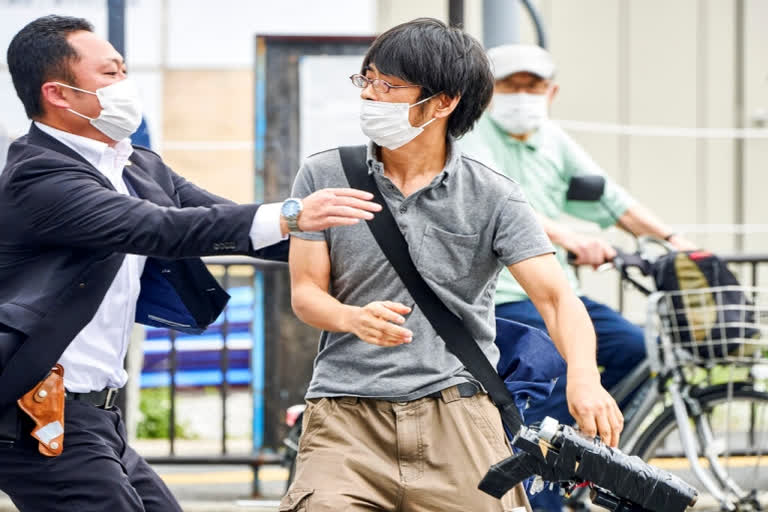New Delhi: At about 11:30 AM on Friday morning, two bullets rang out as a former Japanese PM Shinzo Abe, delivering a speech in a town square in the southern Japanese city of Nara, under the prefecture of the same name, folded up.
The bullets, fired from an assembled gun, had found their mark as Abe was declared dead after a few hours, taking the world by surprise.
Besides the precision shooting, what was surprising was the ability of the assassin—Tetsuya Yamagami, a 41-year-old former Navy serviceman of Japan's Maritime Self-Defense Force who left active service 17 years ago—to easily position himself so as to take the clear shots at the leader.
Yamagami appears in photographs taken just before the shooting as a non-descript man of medium height dressed in a grey-T-shirt, khaki cargos and a black bag cross that was possibly used to carry the about 15-inch long crude weapon. From the smoke emanating from the firing, it can be presumed that crude home-made cartridges were fired and the fact that the gun had two barrels would imply that it fired single shots twice at one loading.
Also read: Shinzo Abe's assassination stuns world leaders
In other words, Yamagami would have taken extra effort to ensure that the preparations for the assassination were in total secrecy and that he would have to make each shot count as he had only two in his loaded gun. That calls for high level training and expertise in handling firearms. But it may also be a sheer coincidence that Yamagami was a resident of the Nara Prefecture which is just next to the Mie Prefecture where the Iga province is situated. Iga is the traditional home of the shadowy cult of the skilled assassins called the ‘Ninja’ or the ‘Shinobi’ who first appeared in Japan in and around the 15th century.
Well-trained in martial arts and in the arts of spying, deception, sabotage, and concealment, their forte was targeted killings which later resulted in many of the ‘Shinobis’ being employed as mercenaries in the pot-boiling cauldron of Japanese feudal politics. The utility of the ‘Ninja’ or the ‘Shinobi’ got drastically reduced during the ‘Tokugawa’ or ‘Edo’ period (1603–1867) which was a period of peace, political stability, and economic growth.
While a number of treatises on the ‘Shinobi’ written in the 17th and 18th centuries are in existence, the cult gradually slid into obscurity, only to be restored in fact and fiction in modern times by brilliant cinematic efforts by both the Japanese and Chinese but mainly by Hollywood. In Nara, Yamagami definitely would not have been a stranger to the ways of the ‘Shinobi’.



